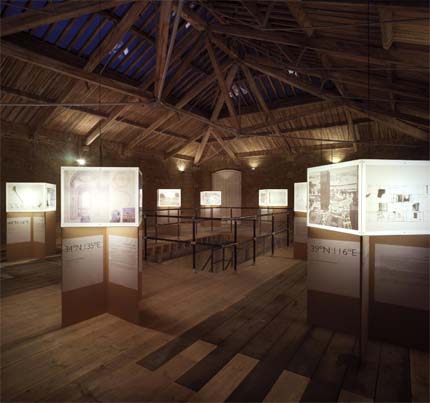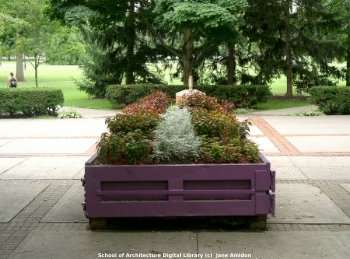For an exhibit during last month’s London Architecture Biennale 2006, curator Matteo Cainer invited “architectural studios from outside the UK (…) to sketch a visionary project for London.” Graphic speculation about another London yet to come, Cainer hoped, would “further consolidate architecture’s role in imagining a future for the city”:
Architects have been invited to take an outsider’s view, and as such submit a sketch for an imaginative project in the city of London. They are free to choose a site and focus, whether addressing issues of planning, landscape, infrastructure or building. The central challenge remains what it has been for centuries: to make architecture a vessel for new and controversial ideas. Gathering together architects with sketches, and critics with words, will entice visitors into a theatre of architectural imagination where a wide range of daring projects, conceived by some of the most inventive and newly emerging architects, come together in a panorama of architecture’s current potential and promise. This will in turn create a platform for discussion and a critical examination of today’s approach to architecture.
The result was The World in One City – A Sketch for London, an exhibit beautifully designed by Cainer’s own Design Research Studio at Fletcher Priest Architects.

 [Images: ©Chris Gascoigne].
[Images: ©Chris Gascoigne].
After emailing Cainer expressing interest in the exhibit itself and in the architectural projects it featured, he responded with a PDF from which these images were taken. Here we see interior shots, offering a glimpse of the show’s dominant theme: coordinate points of latitude and longitude, geographic sites of architectural speculation.


 [Images: ©Chris Gascoigne].
[Images: ©Chris Gascoigne].
“The show tries to move beyond the current scene, dominated by cyberspace and video simulation,” Cainer explains, “and beyond the familiar client restraints and the fashion parade of magazines.” Instead, the exhibit’s purpose is to focus on “the ‘sketch’ as the fulcrum of architectural imagination. Concepts and subsequent sketches are often underestimated: sketching is not only practical but also essential; it is the quickest, most accessible way for generating ideas.”
A website for the show is in the works, as well as a publication.
Finally, let me just add that the idea for this exhibition is totally fantastic, and that every city in the world, frankly, should perform this kind of imaginative self-reflection at least once every few years. By openly speculating about conjectural urban futures – whether those include pedestrian malls, blimp-aquariums, or even insanely ambitious green roof projects – residents of cities everywhere can be reminded that their own urban environment is an ongoing project, and that everyday life itself can be upgraded, reprogrammed, better designed. After all, the architectural future is just a few words and sketches away.
































